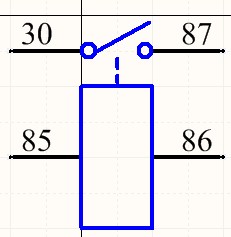I've made a relay's footprint in Altium. The relay's two contact terminal are three pads each, as below.

And the schematic symbol is as below:

In my schematic, I don't give the two terminals any net, and they are floating (connect nothing). In the PCB editor, I want connect the three pads together using tracks, such as the three pads with the designator "87", but the Altium PCB editor prevent me doing this, the pads can't be connected!
I tried give a net to the terminal "87", then I can connect the three pads using tracks. I want to know what's the "strategy" behind this? I think if I give the pads same designator, they should be treated as just one pad, and should be "connectable". Right? Is there other easier method to make them connectable (I have 24 such relays, and it will be a hard work to give nets to the terminals)?
